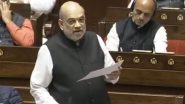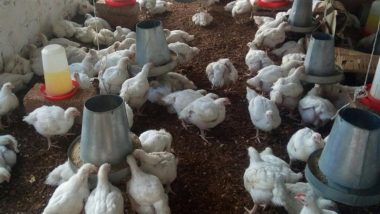New Delhi, May 3: Home ministry has issued an order to further extend lockdown for two weeks beyond May 4 to fight the coronavirus pandemic. The new guidelines have permitted considerable relaxations within the districts falling in the Green and Orange Zones.
Risk Profiling into Different Zones
MHA also issued new guidelines to regulate different activities in this period, based on the risk profiling of the districts into Red (hotspot), Green and Orange Zones. Shekhar Iyer, a political analyst said, “In the third phase of nationwide lockdown, Centre, amid strict isolation measures of quarantine, has allowed some relaxation, primarily in Green zones. The district authority has to continuously assess the situation and accordingly allow for exemptions.” Lockdown 3.0: What is Open and Shut in Mumbai, Pune From May 4? From Liquor Shops, Offices to Barbershops and Salons, See Full List Issued by Maharashtra Government.
The Green Zones will be districts with either zero confirmed cases till date or, no confirmed case in the last 21 days. The classification of districts as Red Zones will take into account the total number of active cases, doubling rate of confirmed cases, extent of testing and surveillance feedback from the districts. Those districts, which are neither defined as Red nor Green, shall be classified as Orange zones.
Safety of Public Health
Under the new guidelines, movement of individuals, for all non-essential activities, shall remain strictly prohibited between 7 pm to 7 am for their well being.
“Government has also allowed manufacturing work to start but by maintaining all social distancing guidelines. It is to note that the government has made sure that activities can be restarted wherever there is no danger to public health” Iyer said on resumption of activities.
Iyer underscores that sectors like Travel, Transport and hospitality are suspended to reduce mobility as the Government wants to be absolutely sure that the disease is contained before opening them.
Resumption of Some Economic Activities
Industrial establishments in urban areas, viz., Special Economic Zones (SEZs), Export Oriented Units (EOUs), industrial estates and industrial townships with access control have been permitted.
These include drugs, pharmaceuticals, medical devices, their raw material, manufacturing of IT hardware; jute industry with staggered shifts and social distancing; and,construction and manufacturing activities.
“If the activity can take place without crowding or gathering then that activity can be started, even in restricted zones. It is on those who are in charge of such activities to maintain social distancing, follow up on wearing masks and using sanitizers as per the guidelines” Iyer added on precautions prescribed on resumption of activities.
On E-Commerce and Standalone Shops
Iyer mentions that all standalone (single) shops, neighborhood (colony) shops and shops in residential complexes are permitted to remain open in urban areas, without any distinction of essential and non-essential. E-Commerce activities, in the Red Zones, are permitted only in respect of essential goods.
As per guidelines, shops in urban areas, for non-essential goods, are not allowed in malls, markets and market complexes.
Activities that are Completely Prohibited
Under the new guidelines, a limited number of activities will remain prohibited throughout the country, irrespective of the Zone. These include travel by any means and inter-State movement by road; educational institutions; hospitality services; places of large public gatherings, such as cinema halls, malls, gymnasiums, sports complexes, religious places. However, movement of persons by air, rail and road is allowed for select purposes, and for purposes as permitted by MHA.
(This article has been sourced from Prasar Bharati News Services as part of Coronavirus coverage)
(The above story first appeared on LatestLY on May 03, 2020 10:53 PM IST. For more news and updates on politics, world, sports, entertainment and lifestyle, log on to our website latestly.com).













 Quickly
Quickly




















